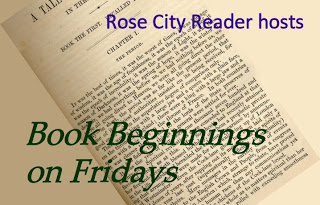For my writer’s review of The Girl Who Kicked The Hornet’s Nest by Stieg Larson I’m going to take a different tack than I used for some of the other books. For this title, I’m going to discuss more about the author and how the book came about.
Note: this post may contain a few spoilers.

 (*Amazon Affiliate link)
(*Amazon Affiliate link)
As you may know, we have been reading through the list of the 100 bestsellers picked by the computer algorithm as revealed in The Bestseller Code by Jodie Archer and Matthew L. Jockers. Book number 94 on the list, Hornet’s Nest is actually the third in the Millenium trilogy featuring flawed genius Lisbeth Salander and journalist Mikael Blomkvist.
Summary: The Girl Who Kicked The Hornet’s Nest starts where the second (The Girl Who Played with Fire ) left off, with Lisbeth headed to the hospital with a bullet in her head. She’s been accused of murders she didn’t commit. Will she survive long enough to be able to prove her innocence?
Writing Discussion:
The story behind the trilogy is almost as amazing as the books themselves. Stieg Larsson was a Swedish journalist who wrote the novels in the evening as a break from his day job. He wrote three novels and then sold them to a publisher. A short time later, in 2004, he passed away. The publishers put out the first book in Swedish in 2005. It was a huge hit. It was translated into English and became a worldwide bestseller.
Much of the criticism of the books relates to the writing. At the face of it, what Stieg Larsson does as a writer often flies in the face of the “rules.” For example, he writes largely from the omniscient viewpoint, when first-person and tight third-person point of views are more popular. Some of the dialogue exhibits “talking heads,” which is when two people talk back and forth without action or even labels to identify who is speaking.
Example “Talking Head” Dialogue:
It’s about one of your patients, Lisbeth Salander. I need to visit her.”
“You’ll have to get permission from the prosecutor. She’s under arrest, and all visitors are prohibited. Any applications for visits must be referred in advance to Salander’s lawyer.”
“Yes, yes I know. I thought we could cut through all the red tape in this case…”
{{Pages 170-171. Continues for another 27 lines without a single dialogue tag.}}
He also spends a lot of time in the character’s heads, showing their thoughts. And speaking of characters, like fellow journalist Joe Klein in Primary Colors, Larsson packs in many, many characters. At one point there were four different teams investigating the murders, each with more than a handful of people. The reader needs a game card to keep them all straight.

Photo of Swedish barn via Visualhunt.com
But Whose Words?
Alas, it is unfair to criticize Stieg Larsson as a writer after reading the English translation because it might not reflect his original words. It turns out the translator, Steven T. Murray, was so unhappy with how the British publisher interfered with the translation that he insisted the books be published under a pseudonym, Reg Keeland. See more about why Murray chose a pseudonym in an article at Southwest Writers. Fascinating!
Conclusion:
Regardless of the writing or who is responsible for it, Stieg Larsson created characters who are spellbinding and he is a fabulous storyteller. Although some parts of the narrative are dark and disturbing, the ending is one of hope. In my opinion, this is the best book from the list we’ve read so far.
Questions to Ponder:
- The first book was originally published in Swedish as Män som hatar kvinnor or Men Who Hate Women. When it was translated, it became The Girl With the Dragon Tattoo. Given one of the themes in the books is the empowerment of women, what do you think Stieg Larsson would have thought of the name change?
- There have been a flurry of “Girl” books lately, such as Gone Girl and Girl on a Train. Do you think the publishers are trying to cash in on the popularity of Stieg Larsson’s books?
- What do you think about writing axioms, such as the one to avoid “talking heads”? Are they important or are they meant to be broken?
Related: If you enjoyed the books you might also enjoy this satire piece from The New Yorker, “The Girl Who Fixed the Umlaut” by Nora Ephron.
Join us on social media:
__________________
What are we reading next?
If you ever have questions about what we are reading next or when we’re starting the next discussion, check the 100 Book List tab in the navigation bar at the top of the blog.
The next book is number 93. Olive Kitterage by Elizabeth Strout (2008) – Discussion begins February 13, 2017.
Note: Olive Kitterage won a Pulitzer Prize for fiction.










